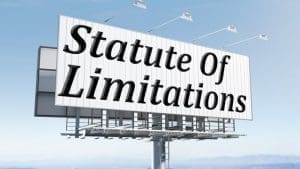Employment Discrimination Legal Help: Understanding Your Rights and Remedies in the Modern Workplace
Employees facing workplace discrimination frequently ask, “What legal help is available when I believe I’ve been discriminated against at work?” Employment discrimination legal assistance encompasses a comprehensive framework of federal and state protections designed to ensure equal treatment in hiring, promotion, compensation, and termination decisions. Unlike simple workplace conflicts, discrimination involves unlawful treatment based on protected characteristics such as race, gender, age, religion, or disability status.
Legal remedies for employment discrimination have evolved significantly since the Civil Rights Act of 1964, creating multiple avenues for employees to seek justice while maintaining important protections for employers against frivolous claims. The modern legal landscape requires understanding both individual rights and the proper procedures for pursuing legitimate discrimination claims through appropriate channels.
What Federal Laws Protect Employees From Workplace Discrimination?
Title VII of the Civil Rights Act of 1964 serves as the cornerstone of federal employment discrimination law, prohibiting discrimination based on race, color, religion, sex, or national origin. This landmark legislation established the Equal Employment Opportunity Commission (EEOC) as the primary federal agency responsible for investigating and enforcing workplace discrimination claims.
The Age Discrimination in Employment Act of 1967 specifically protects workers over 40 from age-based discrimination, while the Americans with Disabilities Act of 1990 ensures equal opportunities for qualified individuals with disabilities1. The Pregnancy Discrimination Act of 1978 clarifies that discrimination based on pregnancy, childbirth, or related medical conditions constitutes unlawful sex discrimination under Title VII.
Protected classes under federal law now include race, color, national origin, religion, sex (including pregnancy and sexual orientation), age (40 and older), disability, genetic information, and citizenship status for those authorized to work in the United States3. Each protected characteristic carries specific legal definitions and enforcement mechanisms that affect how discrimination claims are evaluated and resolved.
The Equal Pay Act of 1963 requires equal compensation for equal work regardless of gender, while the Genetic Information Nondiscrimination Act of 2008 prohibits employers from using genetic information in employment decisions1. These laws create a comprehensive framework protecting employees from discrimination throughout the employment relationship.
How Do State Laws Expand Upon Federal Discrimination Protections?
State employment discrimination laws often provide broader protections than federal statutes, extending coverage to additional protected classes and smaller employers. Many states include sexual orientation, gender identity, marital status, and political affiliation as protected characteristics beyond those covered by federal law.
Constitutional protections at the state level frequently mirror federal constitutional principles while adding specific state constitutional provisions that may provide additional remedies for discrimination victims. State courts often interpret these provisions more expansively than federal courts interpret similar federal constitutional language.
California’s Fair Employment and Housing Act exemplifies comprehensive state-level protection, covering employers with five or more employees and including protections for sexual orientation, gender identity, and gender expression. New York’s Human Rights Law similarly extends protection to additional categories while providing state-specific remedies and procedures.
Due process rights under state constitutions may provide additional procedural protections for public employees facing discrimination, including enhanced hearing rights and appeal processes. Private sector employees may benefit from state civil rights statutes that provide more generous damage awards or longer statutes of limitations than federal alternatives.
What Role Does the EEOC Play in Employment Discrimination Cases?
The Equal Employment Opportunity Commission serves as the primary federal agency for investigating and resolving employment discrimination complaints. Before filing a lawsuit under most federal employment discrimination statutes, employees must first file a charge with the EEOC within 180 days of the discriminatory act, though this period extends to 300 days in states with approved fair employment practice agencies.
Federal employment law requires the EEOC to investigate discrimination charges, attempt conciliation between parties, and determine whether reasonable cause exists to believe discrimination occurred. The agency may file suit on behalf of employees or issue a “right to sue” letter allowing private litigation to proceed.
EEOC mediation programs provide alternative dispute resolution mechanisms that can resolve discrimination claims more quickly and cost-effectively than traditional investigation processes. These voluntary programs maintain confidentiality while allowing parties to negotiate mutually acceptable resolutions without admitting liability.
The agency’s enforcement priorities focus on systemic discrimination affecting multiple employees, discriminatory policies with broad impact, and cases involving egregious individual treatment. Understanding these priorities helps employees and employers anticipate which cases may receive enhanced EEOC attention and resources.
How Do Religious Liberty Protections Intersect With Employment Discrimination Law?
Religious liberty occupies a unique position within employment discrimination law, requiring employers to accommodate sincerely held religious beliefs unless doing so would cause undue hardship. Title VII’s religious accommodation requirements create affirmative obligations for employers beyond simple non-discrimination principles.
The Supreme Court’s recent decisions have strengthened religious accommodation requirements, clarifying that employers must demonstrate substantial difficulty or expense rather than merely minimal burden to deny accommodation requests. These developments particularly affect workplace scheduling, dress codes, and policies regarding religious observance.
Workplace harassment based on religion receives the same legal protection as other forms of discriminatory harassment, requiring employers to maintain environments free from religious hostility or intimidation. However, the intersection of religious liberty and other protected characteristics creates complex legal questions requiring careful legal analysis.
Religious employers may claim exemptions from certain employment discrimination requirements under the ministerial exception and religious organization exemptions. These exceptions reflect constitutional principles protecting religious autonomy while maintaining employee rights in secular workplace contexts.
What Constitutional Principles Guide Employment Discrimination Analysis?
Constitutional protections under the Equal Protection Clause of the Fourteenth Amendment provide the theoretical foundation for employment discrimination law, though these protections apply directly only to government employers. Private sector discrimination is addressed through statutory frameworks rather than direct constitutional application.
The Supreme Court’s equal protection jurisprudence establishes different levels of scrutiny for different types of discrimination claims. Race-based discrimination receives strict scrutiny, gender-based discrimination receives intermediate scrutiny, and other classifications typically receive rational basis review.
Due process rights protect both employees and employers from arbitrary government action in employment discrimination enforcement. Procedural due process requires fair notice and hearing opportunities before adverse employment actions, while substantive due process protects against arbitrary or irrational discrimination policies.
The First Amendment’s free speech and association protections may limit certain employment discrimination remedies, particularly in cases involving expressive conduct or associational choices. These constitutional principles create tensions between anti-discrimination goals and fundamental rights protections.
How Do Recent Supreme Court Decisions Affect Employment Discrimination Law?
Conservative legal principles have gained prominence in recent Supreme Court employment discrimination decisions, emphasizing textual interpretation, limited government intervention, and protection of constitutional rights. These developments affect how discrimination claims are analyzed and what remedies are available.
The Court’s decision in Bostock v. Clayton County (2020) interpreted Title VII’s prohibition on sex discrimination to include sexual orientation and gender identity discrimination, though this decision relied on textualist interpretation rather than expansive civil rights theory. This approach demonstrates how conservative legal methodology can reach results that expand employee protections.
Equal opportunity principles reflected in recent decisions emphasize merit-based employment practices and constitutional color-blindness rather than group-based preferences or quotas. These principles affect how employers design diversity and inclusion programs while maintaining legal compliance.
Recent decisions have also strengthened religious liberty protections in employment contexts, requiring greater accommodation of religious beliefs and practices. These developments reflect broader conservative legal principles emphasizing constitutional rights and limited government interference with religious exercise.
What Are the Most Common Types of Employment Discrimination Claims?
Workplace harassment constitutes the most frequently reported form of employment discrimination, encompassing unwelcome conduct based on protected characteristics that creates hostile work environments or results in tangible employment actions. Sexual harassment claims receive significant attention, but harassment based on race, religion, age, and disability also generates substantial litigation.
Hiring discrimination remains persistent despite decades of legal prohibition, with studies showing continued disparities in callback rates and job offers based on protected characteristics. These patterns often require statistical analysis and expert testimony to establish discriminatory intent or disparate impact.
Promotion and advancement discrimination affects career progression and compensation, often involving subjective evaluation processes that may mask discriminatory decision-making. These claims typically require comparative evidence showing similarly situated employees received more favorable treatment.
Retaliation claims have increased significantly in recent years, protecting employees who oppose discrimination or participate in discrimination investigations. Retaliation protection extends beyond the original discrimination claim, creating independent legal violations that may be easier to prove than underlying discrimination.
How Do Employers Defend Against Employment Discrimination Claims?
Legitimate business reasons provide the primary defense against employment discrimination claims, requiring employers to articulate non-discriminatory justifications for challenged employment actions. These defenses must be credible, consistently applied, and supported by contemporaneous documentation.
Legal remedies available to successful discrimination claimants include back pay, front pay, reinstatement, compensatory damages, and punitive damages, creating significant potential liability for employers. Understanding these remedies helps employers evaluate settlement opportunities and litigation risks.
Affirmative defenses may limit employer liability even when discrimination is proven, including statutes of limitations, failure to exhaust administrative remedies, and contributory conduct by employees. These defenses require careful legal analysis and factual development to succeed.
Employer anti-discrimination policies and training programs may provide protection against discrimination claims by demonstrating good faith efforts to prevent discrimination and providing complaint mechanisms for employees. However, these policies must be effectively implemented and consistently enforced to provide meaningful protection.
What Documentation and Evidence Are Essential in Discrimination Cases?
Personnel files, performance evaluations, and disciplinary records provide crucial evidence in employment discrimination cases, often revealing patterns of treatment that support or refute discrimination claims. Both employees and employers must preserve these records throughout the litigation process.
Federal employment law requires employers to maintain certain employment records for specified periods, creating evidentiary obligations that may support discrimination claims. Destruction of records during litigation may result in adverse inferences or sanctions against employers.
Witness testimony from coworkers, supervisors, and other employees provides essential evidence regarding workplace culture, discriminatory statements, and comparative treatment. These witnesses may be reluctant to testify, requiring careful legal strategy to secure their cooperation.
Statistical evidence may demonstrate patterns of discrimination affecting multiple employees or entire protected groups. Expert witnesses specializing in employment statistics can analyze hiring, promotion, and compensation data to identify discriminatory patterns that may not be apparent in individual cases.
How Do Damage Awards and Remedies Work in Employment Discrimination Cases?
Compensatory damages in employment discrimination cases include lost wages, benefits, and other economic losses resulting from discriminatory treatment. These damages require careful calculation considering career progression, benefit values, and mitigation of damages through alternative employment.
Legal remedies may include equitable relief such as reinstatement, promotion, or policy changes designed to prevent future discrimination. Courts balance the effectiveness of equitable relief against potential workplace disruption and ongoing employment relationships.
Punitive damages are available in cases involving intentional discrimination with malice or reckless indifference to employee rights. These damages are subject to statutory caps based on employer size, with maximum awards ranging from $50,000 to $300,000 for most private employers.
Attorney fees and costs may be awarded to successful discrimination claimants under most federal employment discrimination statutes, creating additional financial incentives for employers to resolve claims favorably. These fee awards can significantly exceed underlying damage awards in some cases.
What Are Current Trends in Employment Discrimination Litigation?
Intersectional discrimination claims involving multiple protected characteristics have gained prominence, though legal frameworks struggle to address discrimination based on combinations of race, gender, age, and other factors. Federal courts generally do not recognize intersectional claims when characteristics are covered by separate statutes.
Technology-based discrimination presents emerging challenges as artificial intelligence and algorithmic decision-making tools may perpetuate discriminatory patterns. These tools require careful legal analysis to determine whether they create disparate impact or intentional discrimination.
Workplace harassment claims increasingly involve social media conduct, remote work environments, and virtual harassment that may occur outside traditional workplace settings. These developments require expanded definitions of workplace conduct and employer responsibility.
Conservative legal challenges to diversity, equity, and inclusion programs have increased following the Supreme Court’s decision striking down affirmative action in college admissions. These challenges use Civil Rights Act provisions to argue that race-conscious employment programs violate anti-discrimination principles.
How Do State Administrative Agencies Handle Employment Discrimination Claims?
State civil rights agencies provide alternative forums for employment discrimination claims, often offering more accessible procedures and broader protections than federal agencies. These agencies typically investigate claims, attempt conciliation, and may file suit on behalf of employees.
Due process rights in state administrative proceedings may provide enhanced protections compared to federal procedures, including more generous discovery rules, longer investigation periods, and expanded hearing rights. These variations affect litigation strategy and case outcomes.
State agencies often coordinate with the EEOC through work-sharing agreements that allow cross-filing and joint investigation of discrimination claims. These agreements can extend filing deadlines and provide additional procedural protections for employees.
Administrative remedies at the state level may include cease-and-desist orders, policy changes, and monetary awards that differ from federal remedies. Understanding these variations helps determine the most favorable forum for discrimination claims.
What Role Do Private Attorneys Play in Employment Discrimination Cases?
Private employment discrimination attorneys provide essential representation for employees navigating complex legal procedures and employer resources. These attorneys typically work on contingency fee arrangements, making legal representation accessible to employees without significant financial resources.
Legal remedies pursued by private attorneys may differ from those sought by government agencies, with private counsel often focusing on maximum monetary recovery rather than systemic policy changes. This difference affects litigation strategy and settlement negotiations.
Attorney selection significantly impacts case outcomes, with experienced employment discrimination attorneys better positioned to navigate procedural requirements, develop effective evidence, and negotiate favorable settlements. Specialization in employment law provides advantages over general practice attorneys.
Private attorneys may coordinate with government agencies investigating the same discrimination claims, sharing information and resources while maintaining separate representation. This coordination can strengthen both private and government cases while avoiding conflicts of interest.
How Do Settlement Negotiations Work in Employment Discrimination Cases?
Settlement negotiations in employment discrimination cases typically begin during EEOC investigation phases, with mediation programs providing structured frameworks for resolution. Early settlement may avoid litigation costs and publicity while providing quicker resolution for employees.
Equal opportunity principles guide settlement negotiations, balancing employee compensation with employer interests in avoiding admission of liability and future discrimination claims. Settlements typically include non-disclosure agreements and broad release provisions protecting employers from related claims.
Structured settlements may provide long-term financial security for employees while limiting immediate cash payments by employers. These arrangements require careful legal analysis to ensure tax efficiency and adequate protection for employee interests.
Settlement leverage depends on claim strength, potential damages, litigation costs, and reputational concerns affecting employers. Understanding these factors helps parties negotiate realistic settlements that reflect actual case values and litigation risks.
What Are the Procedural Requirements for Filing Employment Discrimination Claims?
Federal employment law requires strict adherence to filing deadlines, with most discrimination claims subject to 180-day or 300-day limitations periods depending on state fair employment practice agency participation. Missing these deadlines typically bars discrimination claims entirely.
Administrative exhaustion requirements mandate filing charges with appropriate government agencies before pursuing private litigation. These requirements vary by statute and jurisdiction, with some exceptions for constitutional claims and certain types of discrimination.
Constitutional protections may provide alternative legal theories for discrimination claims that do not fit within statutory frameworks. These theories typically apply to government employers and may offer different remedies and procedural requirements.
Jurisdictional requirements affect where discrimination claims may be filed, with federal courts, state courts, and administrative agencies having different rules regarding employer coverage, employee eligibility, and available remedies.
How Do Class Action and Systemic Discrimination Cases Proceed?
Class action employment discrimination cases address widespread discriminatory practices affecting multiple employees, requiring careful legal analysis of commonality, typicality, and adequacy of representation. These cases often involve complex statistical evidence and expert testimony.
Workplace harassment class actions may address systemic harassment cultures that affect entire workplaces or demographic groups. These cases require demonstrating that harassment was pervasive and that employer response was inadequate across multiple incidents.
Systemic discrimination cases often involve pattern-or-practice analysis examining employer policies, practices, and statistical outcomes across protected groups. Government agencies may file these cases independently or coordinate with private class actions.
Settlement of class action discrimination cases requires court approval and notice to class members, with complex distribution schemes for monetary awards and injunctive relief. These settlements may include ongoing monitoring and reporting requirements for employers.
What Are the Long-term Implications of Employment Discrimination Law?
Legal remedies for employment discrimination continue evolving with changing workplace dynamics, technological developments, and shifting legal interpretations. These changes affect both employee rights and employer obligations in ways that require ongoing legal attention.
Conservative legal principles emphasizing constitutional rights, limited government intervention, and merit-based employment practices influence how discrimination law develops and is enforced. These principles create tension with expansive civil rights interpretations while maintaining core anti-discrimination protections.
Religious liberty protections may expand in employment contexts, requiring greater accommodation of religious beliefs and practices while maintaining workplace equality principles. These developments reflect broader conservative legal philosophy emphasizing constitutional rights.
The intersection of employment discrimination law with other legal areas including immigration, labor relations, and constitutional law creates complex legal questions requiring sophisticated analysis. These intersections affect how discrimination claims are analyzed and what remedies are available.
Conclusion: Navigating Employment Discrimination Legal Help With Principled Approach
Employment discrimination legal help requires understanding both individual rights and broader legal principles that govern workplace equality. Constitutional protections provide the theoretical foundation for anti-discrimination law, while federal and state statutes create practical mechanisms for addressing discriminatory treatment.
The evolution of employment discrimination law reflects enduring American principles of equal opportunity and individual merit while recognizing legitimate employer interests in maintaining productive workplaces. Conservative legal philosophy contributes to this balance by emphasizing constitutional rights, procedural fairness, and limited government intervention in employment relationships.
Due process rights ensure that both employees and employers receive fair treatment in discrimination proceedings, with proper procedural protections and meaningful opportunities to present evidence and arguments. These protections serve essential functions in maintaining confidence in legal institutions and ensuring just outcomes.
Effective employment discrimination legal help requires skilled attorneys who understand both substantive legal requirements and practical workplace realities. The complexity of modern discrimination law makes professional legal assistance essential for employees facing discriminatory treatment and employers seeking to maintain compliant workplace practices.
The future of employment discrimination law depends on maintaining principled approaches that protect legitimate employee rights while preserving employer freedom and constitutional protections. This balance requires continued attention to legal developments, careful case-by-case analysis, and commitment to fundamental principles of equality and fairness under law.
- Overview of US Employment Discrimination Law
- Guide to Fighting Workplace Discrimination Options
- USCIS Federal Employment Discrimination Laws Summary
- NBER Research on Employment Discrimination Issues
- EEOC Prohibited Employment Policies and Practices
- Justia State Survey of Discrimination Laws
- EPI Report on Strengthening Discrimination Accountability
- Cambridge Journal on Grounding Unlawful Discrimination
- Stop AAPI Hate Anti-Discrimination Laws Summary
- LawHelp Guide to Employment Rights Protection


















